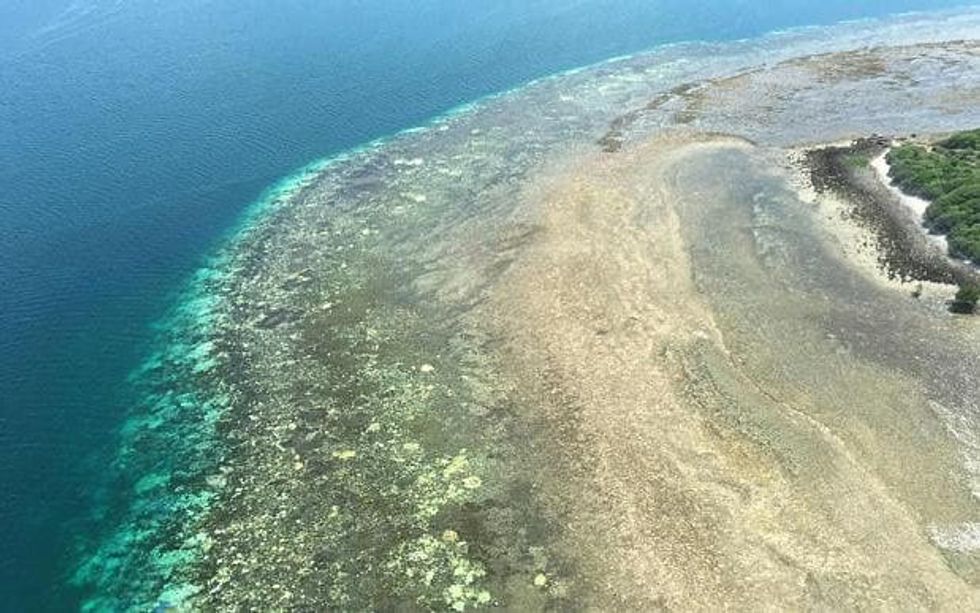You may have heard rumors over the past week that the Great Barrier Reef was pronounced officially dead by scientists.
Don't worry, that's not actually true.
That doesn't mean the reef is out of danger, though.
Professor Tim Flannery, who recently visited the Great Barrier Reef, told ABC News, "If it was a person, it would be on life support."
That doesn't sound good at all.
The Great Barrier Reef is the world's largest reef system, stretching over 1,400 miles off the coast of Queensland, Australia. However, just because it's large doesn't mean it's imperceptible to damage. The climate change of recent years has lead to rising water temperatures, which in turn has damaged the reef. In addition, storms and cyclones, rising ocean acidity, and poor water quality (partially caused by coastal pollution) have also done their fair share of damage in the past few decades.
Over a third of the coral in northern and central parts of the reef was declared dead by scientists in May, and even more devastating was the fact that 93 percent of it had been affected by coral bleaching. The once-colorful reef has turned largely white due to an underwater heatwave, scientists say. Coral bleaching occurs because the warmer waters cause corals to expel zooxanthellae. These are tiny colorful photosynthetic algae, and the loss of these algae results in the "bleaching" of the coral.
The Great Barrier Reef, before and after coral bleaching.
The good news is, coral bleaching is reversible: if the temperature drops and zooxanthellae are able to recolonize them, the bleached corals have a chance to uncover. However, seeing as water temperatures have only been rising lately, this scenario does not seem too likely.
To make things worse, a lot of the bleached coral was actually killed off by the Crown of Thorns starfish because it was too weak to defend itself. "We wanted to see how much repair there'd been, but the coral we saw bleached and in danger a few months back has now mostly died," said Professor Flannery.




 The Great Barrier Reef, before and after coral bleaching.
The Great Barrier Reef, before and after coral bleaching.





































